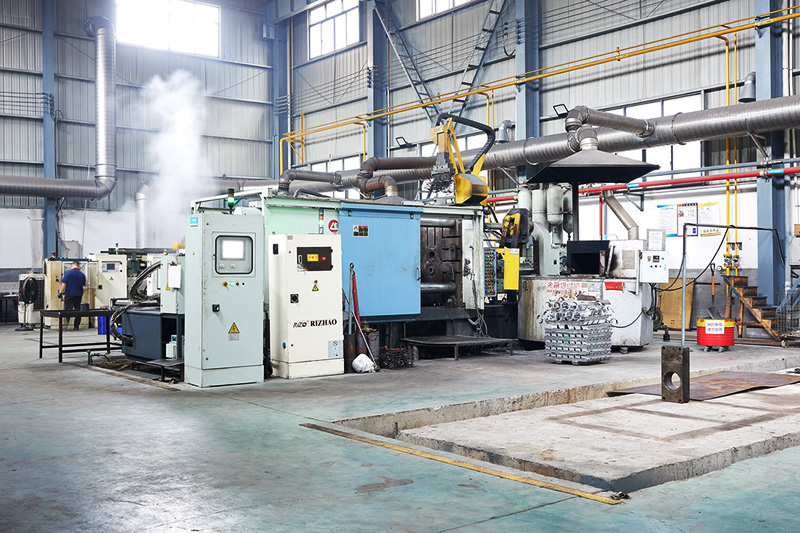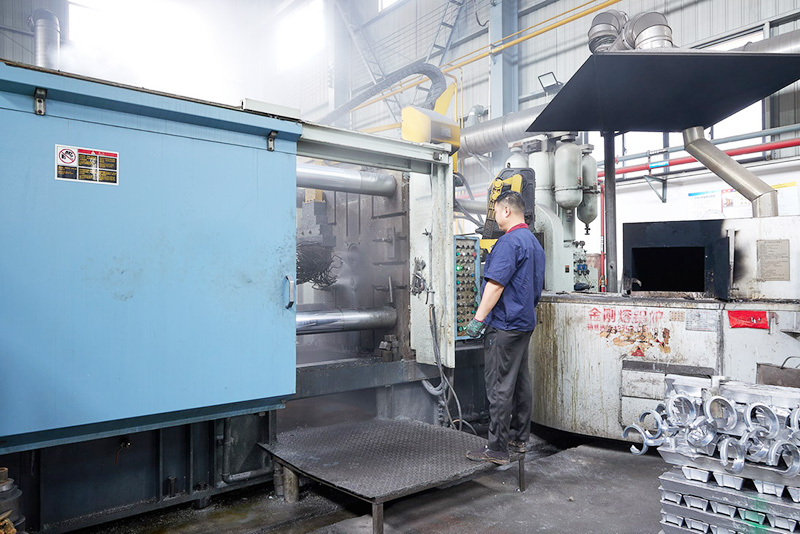 Die casting is a versatile and efficient manufacturing process used to produce complex metal parts with high precision. It involves injecting molten metal into a mold cavity under high pressure, allowing the metal to solidify and take the shape of the mold. This process is widely used in various industries due to its ability to produce parts with excellent dimensional accuracy, smooth surface finishes, and high mechanical strength.
Die casting is a versatile and efficient manufacturing process used to produce complex metal parts with high precision. It involves injecting molten metal into a mold cavity under high pressure, allowing the metal to solidify and take the shape of the mold. This process is widely used in various industries due to its ability to produce parts with excellent dimensional accuracy, smooth surface finishes, and high mechanical strength.
Several metals are suitable for die casting, each offering unique properties that make them ideal for specific applications. Commonly used metals include aluminum, zinc, magnesium, and copper alloys. Aluminum is particularly popular in die casting due to its lightweight nature, corrosion resistance, and good thermal conductivity. Zinc is known for its high ductility and impact resistance, making it suitable for intricate designs. Magnesium offers the advantage of being the lightest structural metal, while copper alloys are prized for Our excellent electrical conductivity.
Aluminum die casting presents numerous advantages that make it a preferred choice for manufacturers. Firstly,  aluminum parts exhibit excellent strength-to-weight ratios, making them ideal for applications where weight reduction is crucial,such as in the automotive and aerospace industries. Additionally, aluminum's natural corrosion resistance enhances the longevity of parts exposed to harsh environments. The process also allows for the production of complex geometries with tight tolerances, reducing the need for additional machining.
aluminum parts exhibit excellent strength-to-weight ratios, making them ideal for applications where weight reduction is crucial,such as in the automotive and aerospace industries. Additionally, aluminum's natural corrosion resistance enhances the longevity of parts exposed to harsh environments. The process also allows for the production of complex geometries with tight tolerances, reducing the need for additional machining.
Various surface treatments can be applied to die-cast aluminum parts to enhance Our appearance and performance. Common treatments include anodizing, powder coating, painting, and plating. Anodizing improves corrosion resistance and allows for color customization. Powder coating offers a durable finish that can withstand wear and tear. Painting provides aesthetic appeal and protection against environmental factors. Plating can enhance electrical conductivity or provide additional corrosion resistance.
Dongrun Casting: Pioneering Aluminum Die Casting Solutions Since 1998
1. Company Evolution & Capabilities
1998 - Founding Era
- Established adjacent to our foundry in Yongkang City, Zhejiang
- Initial setup: 2 die casting machines with 5-minute molten aluminum transfer
- Focused on basic automotive components
2009 - Industrial Leap
- Expanded to 8 machines covering 125T-1250T capacity:
- Precision small parts: 125T/180T/225T (1 each)
- Mid-range components: 280T (2 units)
- Heavy-duty castings: 500T/800T/1250T (1 each)
- Current status: Regional leader in high pressure die casting (HPDC)
2. Technical Advantages
Tooling Expertise
- Partner with Yongkang Mold City (15-minute proximity) - Zhejiang's largest mold manufacturing hub
- Achievable tolerances: ±0.1mm for critical dimensions
- Surface finishes: Ra 1.6μm (as-cast), Ra 0.8μm (with secondary processing)
Production Parameters
- Pressure range: 10-20MPa (1450-2900 psi)
- Minimum wall thickness: 2mm
- Standard draft angle: 0.5°
- Weight spectrum: 0.01kg - 15kg per piece
3. Process Breakdown
HPDC Workflow
1. Mold preparation: Hardened steel molds (H13/DIN 1.2344)
2. Injection: Molten aluminum (ADC12/A380) forced into cavity at 650-700°C
3. Solidification: Rapid cooling under 50-100 tons clamping force
4. Ejection: Automated removal via moving platen
Key Benefits vs. Alternatives
| Parameter | Sand Casting | Permanent Mold | HPDC |
| Surface Finish | Poor | Good | Excellent |
| Dimensional Accuracy | ±2mm | ±0.5mm | ±0.1mm |
| Economic Volume | <1,000 | 1,000-10,000 | 10,000+ |
4. Application Portfolio
- Automotive: Gearbox housings, brake calipers, engine brackets
- E-Mobility: Battery trays, motor end plates
- Industrial: Hydraulic valve bodies, pneumatic components
- Consumer: LED housing, bicycle derailleurs
5. Industry Positioning
- Annual capacity: 8 million castings
- Certifications: IATF 16949, ISO 9001
R&D focus: Thin-wall structural castings (1.5mm achievable for specific geometries)
